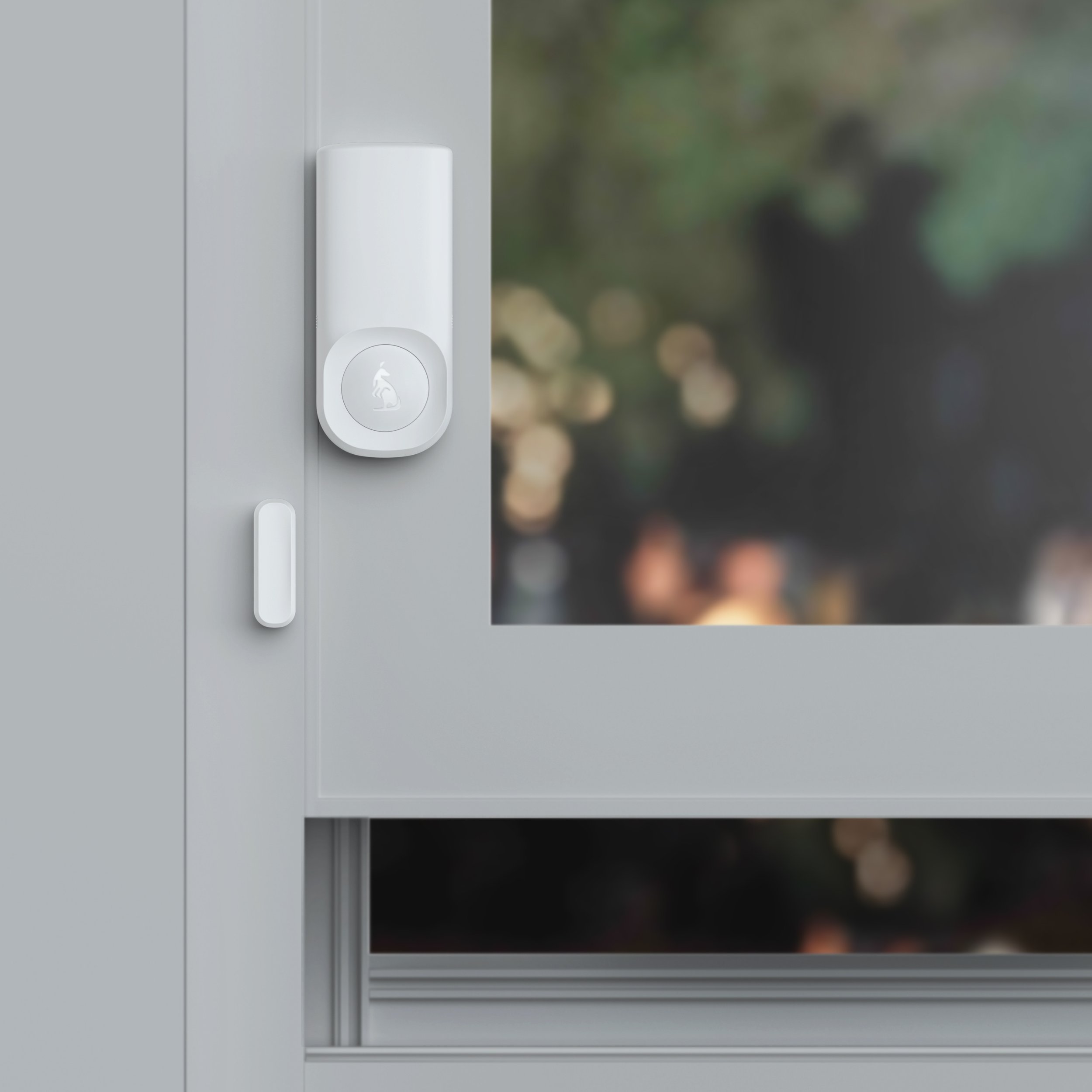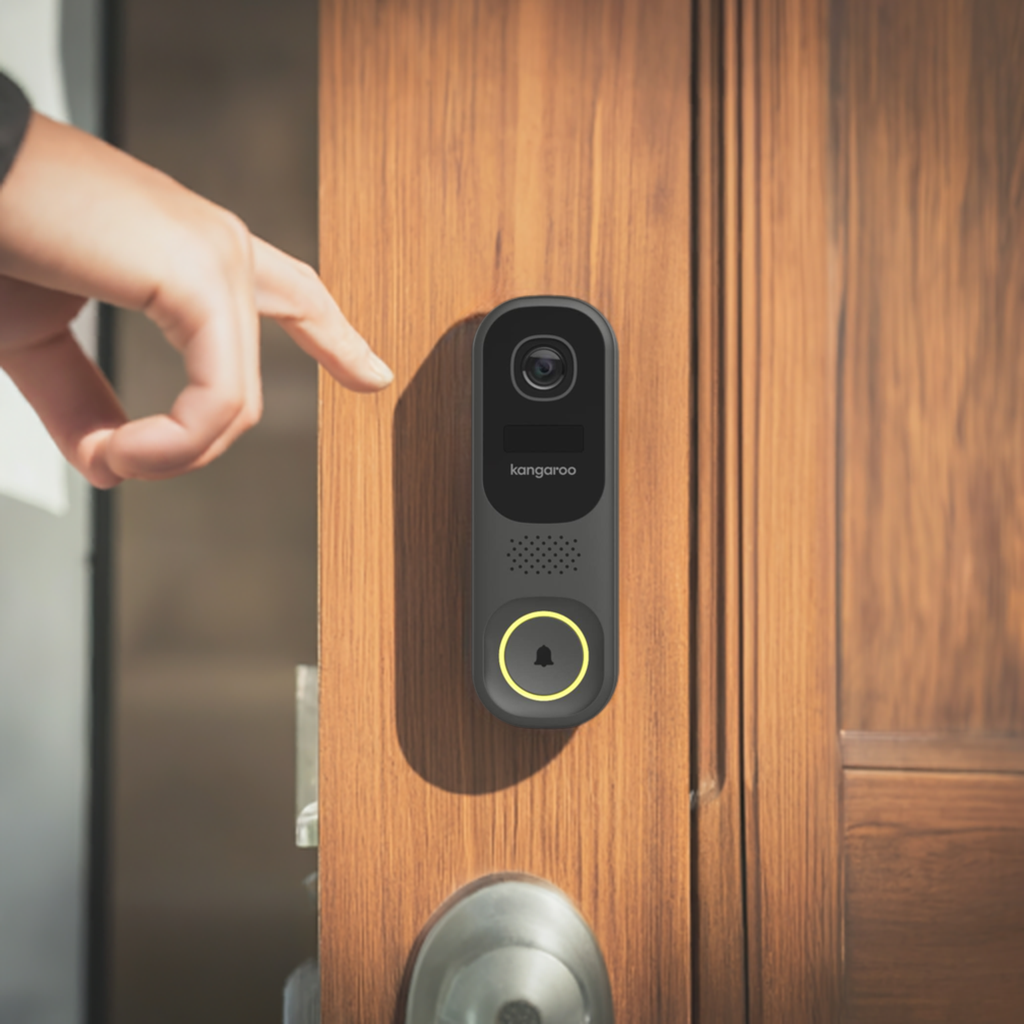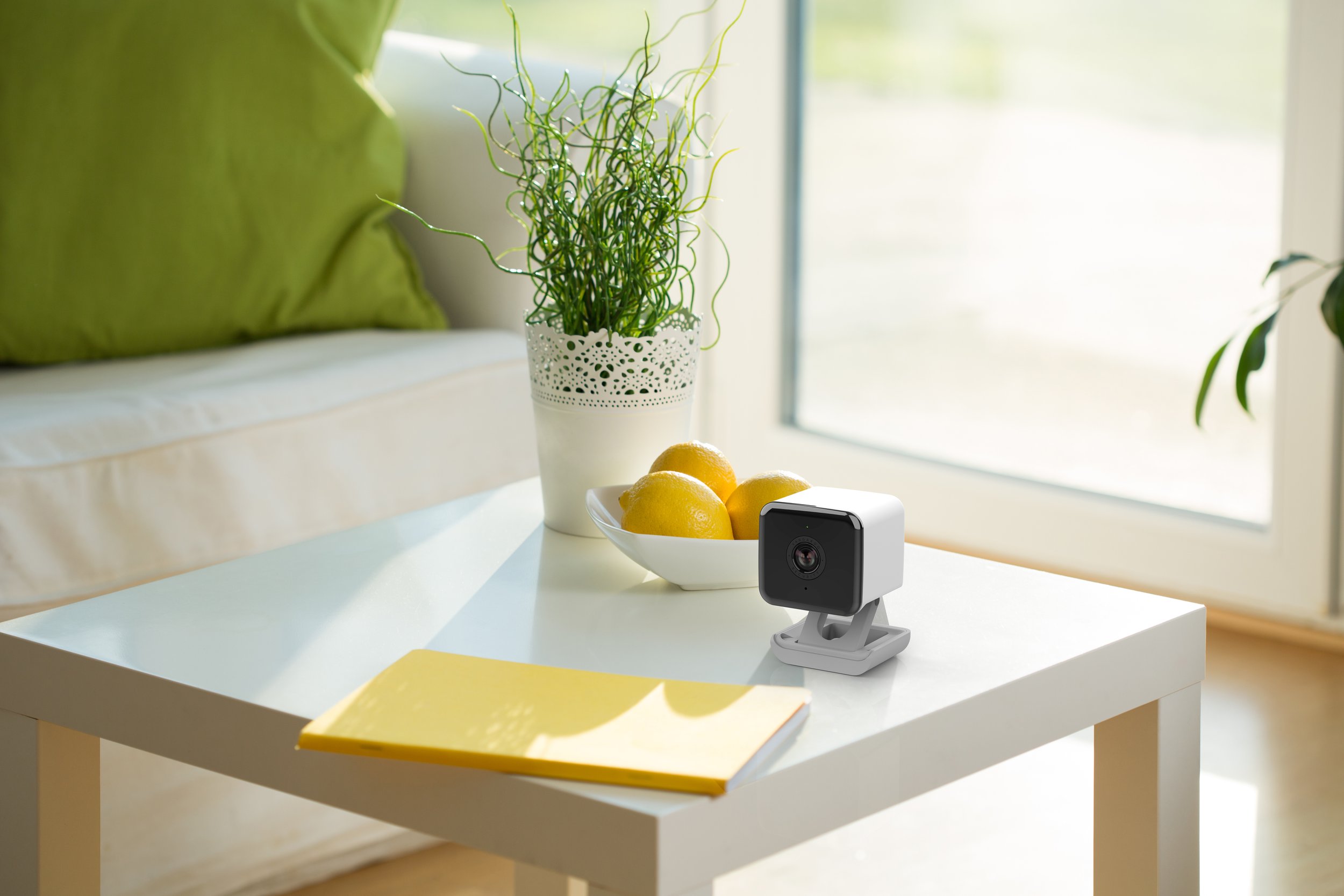The Ultimate Guide to Relocatable Self Install Home Security Systems
Why DIY Home Security is a Game-Changer
Home security is no longer just for homeowners. With portable DIY security systems, renters and frequent movers can now enjoy robust protection without drilling holes or signing long-term contracts. Whether you own or rent, a smart security system provides peace of mind and flexibility.
Who Benefits Most from Portable Security Systems?
Renters: Freedom and Flexibility
No Landlord Approval Needed – Most portable security systems require no drilling or hardwiring, making them ideal for renters who must adhere to strict lease agreements.
Affordable and Cost-Effective – DIY security systems generally have lower upfront costs than professionally installed ones.
Easy Relocation – Moving? Just pack up your system and set it up in your new place hassle-free.
Homeowners: Adaptability and Convenience
Great for Vacation Homes & Rentals – Secure additional properties without permanent installations.
DIY Smart Upgrades – Add motion detectors, door/window sensors, and security cameras without a professional.
Customizable for Changing Needs – Adjust sensor placements seasonally or during renovations.
Key Features to Look for in a DIY Security System
Before investing, consider these factors:
Monitoring Options: Professional monitoring vs. self-monitoring.
Essential Equipment: Door/window sensors, motion detectors, indoor/outdoor cameras, and environmental sensors.
Smart Home Compatibility: Integration with Apple HomeKit, Alexa, or Google Home.
Ease of Installation: Simple plug-and-play or adhesive mounting options.
Cost: Compare equipment prices, monitoring fees, and service plans.
Top Portable DIY Home Security Brands
| Brand | Description | Website |
|---|---|---|
| Kangaroo Security | A budget-friendly option with motion sensors, cameras, and video doorbells for easy DIY installation. | Visit Kangaroo |
| Ring Alarm/Ring Alarm Pro | A well-known brand offering flexible, wireless security solutions with optional professional monitoring. | Visit Ring |
| Wyze Security | An affordable smart home system with high-quality cameras, sensors, and automation features. | Visit Wyze |
| Frontpoint Security | Known for reliable DIY security systems with mobile app control and smart home integration. | Visit Frontpoint |
| ADT Self Setup | A DIY version of the trusted ADT brand with customizable features and monitoring options. | Visit ADT Self Setup |
Enhancing the Top Tier in DIY Security: Introducing Kangaroo
In the industry of DIY security systems, Kangaroo stands alongside esteemed brands like Ring Alarm/Ring Alarm Pro, Apple Homekit, Frontpoint, and Wyze. Kangaroo has swiftly risen as a formidable competitor, offering users a seamless blend of innovation and reliability. Here's why Kangaroo warrants your attention:
Effortless Installation: Kangaroo prioritizes simplicity, ensuring a hassle-free setup process. Ideal for enthusiasts of DIY security systems, Kangaroo's streamlined installation saves time and frustration.
Tailored Security Solutions: With Kangaroo, customization is key. Explore a plethora of sensors and accessories, including video doorbells, glass break sensors, and outdoor cameras, to craft a security system tailored to your unique requirements.
Dependable Performance and Intuitive Interface: Kangaroo garners acclaim for its unwavering reliability and user-friendly app. Seamlessly monitor your home security, receive timely alerts, and manage smart home integrations, all from the convenience of your smartphone. Embrace Kangaroo for a smart security solution that adapts to your lifestyle.
Step-by-Step: Setting Up a Kangaroo DIY Home Security System
Before You Begin:
Gather your tools: Most Kangaroo devices require minimal tools. You might need a screwdriver for the optional mounting of the Siren Keypad and some doorbell options.
Download the Kangaroo App: This is your control center – download it on your smartphone from the App Store or Google Play.
Have your Wi-Fi network details ready: You'll need your network name and password to connect your devices.
General Installation Steps:
Start with the Siren+Keypad: As the central hub, this typically goes in a central location like your living room. Kangaroo provides mounting hardware, but you can also place it on a flat surface. Plug it into a power outlet.
Activate Your Devices: Most Kangaroo devices come pre-synced. Simply remove the pull tab from each sensor (door/window) or the doorbell cameras to activate it. The app will guide you through pairing each device with the Siren Keypad.
Specific Device Installation:
Choose a location: Pick a spot near your front door with a good Wi-Fi signal and a clear view.
Peel and Stick the Mounting: Remove the adhesive backing from the mounting bracket included with the doorbell. Carefully position the bracket on the chosen location, ensuring it's level using the level tool. Press firmly to secure the bracket.
Test the Doorbell: Once connected, trigger the doorbell by pressing the button. You should see the photo stitches from the doorbell within the Kangaroo app. Additionally, test features like motion detection and receiving alerts on your smartphone.
Choose a location: Similar to the doorbell, consider a Wi-Fi signal and a clear view. This doorbell requires a wired connection (existing doorbell wiring).
Professional installation recommended: Due to the wired connection, Kangaroo recommends professional installation for this doorbell (available for an extra fee).
If DIY installation: Ensure you have electrical wiring knowledge and turn off power before proceeding. Follow the detailed instructions provided by Kangaroo for wiring the doorbell.
Mount the doorbell: Similar to the battery-powered doorbell.
Choose a location: Consider the area you want to monitor and ensure a strong Wi-Fi signal. This camera works indoors or outdoors (weatherproof).
Mount the camera: Peel off the adhesive backing on the included mounting bracket and stick it to your desired location (wall, ceiling, etc.). The camera magnetically attaches to the bracket for easy adjustment.
Power on: Plug the camera's power cable into an outlet.
Choose a location: Place the sensor in an area you want to monitor temperature and humidity, like your basement or near water pipes.
Mount the sensor: Peel off the adhesive backing and stick the sensor to a clean, dry surface.
Testing and Customization:
Test your system: Walk through your home and trigger sensors or activate the doorbell to ensure they're working and sending alerts to the app.
Customize settings: The Kangaroo app allows you to personalize your system with features like arming schedules, notification preferences, and even siren sounds.
Explore additional functionalities: Depending on your chosen devices, you might be able to integrate them with smart home systems through the app.
Additional Tips:
Read the instructions: While the process is designed to be easy, take a few minutes to look at the included instructions or online resources for your specific Kangaroo devices.
Start small, expand later: Begin with the essential devices and add more sensors or cameras as needed.
By following these steps and referencing the Kangaroo app's guidance, you'll be enjoying a secure and monitored home with your Kangaroo system up and running in no time.
Moving? Kangaroo Makes Security on the Move a Breeze!
Life takes us places, and Kangaroo understands. The beauty of the Kangaroo system is that it's as easy to move with you as it is to set up in the first place. Here's the deal:
Reset and Pack: When it's time to relocate, simply reset your Kangaroo devices using the app's easy instructions. Pack them carefully, and they'll be ready for action in your new home.
New Place, Same Easy Setup: Once settled in, grab your Kangaroo devices and the app. The user-friendly setup process you experienced the first time will be waiting for you again. Just follow the familiar steps to reconnect your devices and establish your security zone anew.
No need to worry about complex re-wiring or professional installation (unless you choose the wired video doorbell). Kangaroo empowers you to take your peace of mind with you, wherever you call home.
Related Contents:
What Is the Best Home Security System for Your Apartment
Decoding the Best Self Monitored Home Security Systems
Easy Steps to Install a Home Security System at Home
Real Customer Experiences with Kangaroo: Reliable, Affordable, and Easy to Use
Good value
"Originally was looking at Ring devices. I went with this one because of price and it has a doorbell that makes noise in the house. I have an unusual design to my house so I can’t hear anyone knocking. Easy to install and app easy to use and set up"
- Kimberly C., Amazon Verified Purchase
Excellent product
"Excellent quality product easy installation" - GlennT., Amazon Verified Purchase
Works perfectly!
"This product was so easy to install and get started. I can see everything that’s happening even when I’m at work. You wouldn’t think the camera would be so vivid but it is. It reaches across the street to my neighbors yard and is extremely clear. Definitely worth it. I’ve already recommended it to friends and families who have moved recently and we’re looking for a camera doorbell!"
- Mary F., Amazon Verified PurchaseGood price and affordable
"Love, this doorbell, cam easy to install no screws or anything like that necessary. It comes with the sticker so that you can stick it on the outside of your apartment. It works great great battery life great support system easy set up."
- Mecho, BestBuy Verified PurchaseGreat Cam
"Easy to install, set up and operate. Picture is clear. Picks up sound."
- Jennifer, BestBuy Verified PurchaseGreat product
"very easy to set-up and function very well, very user friendly with both wired and battery options, highly recommended product."
- Conny, Chewy Customer Review
Q & A: The Ultimate Guide to Relocatable Self-Install Home Security Systems
Your Questions Answered!
-
DIY home security systems offer homeowners the flexibility and convenience to set up and customize their security networks without professional assistance. Brands like Kangaroo Home Security, Ring Alarm, and Frontpoint provide comprehensive DIY Security Systems that cater to various needs and budgets.
-
Ring Alarm Pro offers advanced features such as built-in eero Wi-Fi 6, a Z-Wave hub, and an integrated router, making it a comprehensive solution for smart security. Its compatibility with other Ring devices and Apple HomeKit ensures seamless integration into existing smart home ecosystems, enhancing overall security and convenience.
-
Outdoor cameras serve as crucial components in DIY Security Systems, providing surveillance of entry points and outdoor spaces. Brands like Wyze offer affordable yet reliable outdoor camera options, equipped with features like motion detection and night vision to ensure comprehensive monitoring and deterrence.
-
-
Glass break sensors are essential components of DIY Security Systems, detecting the sound frequency of breaking glass and triggering alarms in the event of a potential intrusion. Integrating glass break sensors with indoor cameras enhances the system's ability to detect and respond to security threats effectively.
-
Indoor cameras provide homeowners with real-time monitoring of interior spaces, offering peace of mind and enabling remote surveillance. Brands like Wyze offer affordable indoor camera options with features such as two-way audio and motion detection, enhancing overall security and situational awareness.
-
Apple HomeKit compatibility allows users to control and monitor their DIY Security Systems seamlessly using Apple devices and Siri voice commands. This integration enables remote access, automation, and integration with other smart home devices, elevating the overall security and convenience of the system.
-
Video doorbells play a crucial role in DIY Security Systems, providing visual and audio communication with visitors and enhancing doorstep security. Brands like Ring Alarm offer feature-rich video doorbells with HD video quality, motion detection, and two-way audio capabilities, ensuring comprehensive monitoring and control.
-
When choosing outdoor cameras, it's essential to consider factors such as weather resistance, night vision capabilities, and motion detection sensitivity. Opting for brands like Wyze ensures reliable performance and affordability, making them ideal choices for enhancing the outdoor security of DIY setups.
-
Smart Security integration enables seamless connectivity and automation, allowing users to monitor and control their DIY Security Systems remotely. Whether it's integrating with Apple HomeKit or utilizing compatible devices from brands like Ring Alarm, smart security features enhance overall system functionality and convenience.
Final Thoughts: Secure Your Home with a DIY Security System
A relocatable DIY home security system is the perfect solution for renters and homeowners looking for affordable, easy-to-install protection. Brands like Kangaroo, Ring, and Wyze offer flexible, budget-friendly solutions with modern smart home integration.
FUN FACT!
Did you know that according to a survey, curious Kangaroos have been caught on camera (outdoor camera) trying to peek inside homes through video doorbells? This might be a sign it's time to invest in a DIY home security system. Luckily, there are plenty of options like Kangaroo Home Security, Ring Alarm Pro, Ring Alarm, Frontpoint, ADT Self Setup, Wyze, and more! Remember, the best home security is the one that fits your needs. Some systems integrate with Apple HomeKit for smart home control. No matter your choice, having a glass break sensor and indoor cameras can add extra layers of protection.
So get rid of your worries and enjoy the peace of mind that comes with a secure home, even if a curious Kangaroo comes knocking (or hopping)!









